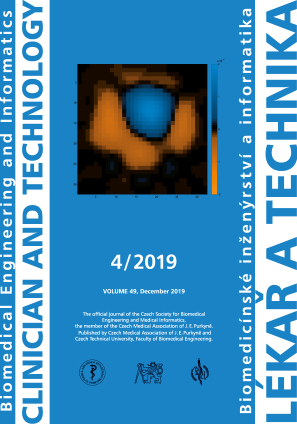THE ADOPTION OF AUTOMATED FiO2 CONTROL INTO POLISH NICUS: 2012-2019
DOI:
https://doi.org/10.14311/CTJ.2019.4.03Keywords:
Automated oxygen control, assimilation of technology, neonatal ICU, research planAbstract
The introduction and adoption of new technology in medicine is a continuous ever present process but it is often not studied. Insights gained from documenting such experiences can not only guide local practices but also provide valuable quality benchmarks. Automated control of FiO2 based on continuous SpO2 (A-FiO2) not only reduces the challenging task of manual oxygen titration, but also has the potential to greatly improve the morbidity and mortality of extremely preterm infants. First approved for use in Europe in 2012, it is now available on most infant ventilators outside the USA. Poland was the first region in Europe to implement its clinical use. We report experience from 619 infants from 12 centers recorded in a web-based registry established in 2013 to document its use. We found the A‑FiO2 was primarily used in the first week of life in intubated infants. However it is also successfully applied in both noninvasively supported infants and in those who were difficult to wean from oxygen and who exhibited frequent desaturations. We also found the SpO2 target range and alarm setting are not different from normal manual titration, although wider settings are also used and promise some benefit. Finally we report our plan to gather data from a national data base and detailed surveys. The surveys will document subjective aspects of this experience from a core group of centers. Details of the surveys are included and cover: experience with training and acceptance, changes in practice associated with the years of experience and barriers to broader use.
Downloads
Published
Issue
Section
License
Copyright (c) 2020 Thomas Edward Bachman

This work is licensed under a Creative Commons Attribution 4.0 International License.
Authors who publish with this journal agree to the following terms:
- Authors retain copyright and grant the journal right of the first publication with the work simultaneously licensed under a Creative Commons Attribution License (https://creativecommons.org/licenses/by/4.0/) that allows others to share the work with an acknowledgment of the work's authorship and initial publication in CTJ.
- Authors are able to enter into separate, additional contractual arrangements for the non-exclusive distribution of the journal’s published version of the work (e.g., post it to an institutional repository or publish it in a book), with an acknowledgment of its initial publication in this journal.
- Authors are permitted and encouraged to post their work online (e.g., in institutional repositories or on their website or ResearchGate) prior to and during the submission process, as it can lead to productive exchanges.
CTJ requires that all of the content of the manuscript has been created by its respective authors or that permission to use a copyrighted material has been obtained by the authors before submitting the manuscript to CTJ. CTJ requires that authors have not used any copyrighted material illegally, as for example a picture from another journal or book, a photo, etc. It is the author’s responsibility to use only materials not violating the copyright law. When in doubt, CTJ may ask the authors to supply the pertinent permission or agreement about the use of a copyrighted material.
The opinions expressed in CTJ articles are those of authors and do not necessarily reflect the views of the publishers or the Czech Society for Biomedical Engineering and Medical Informatics.


